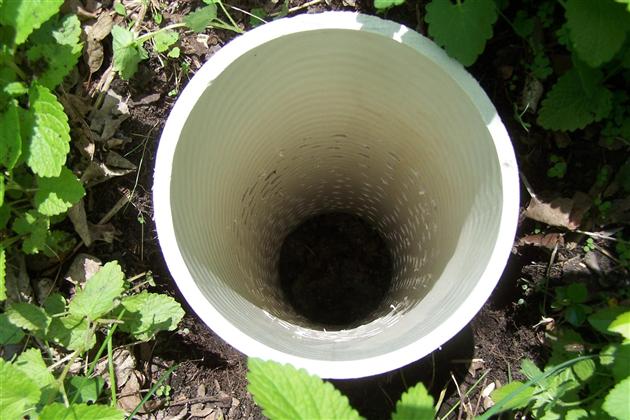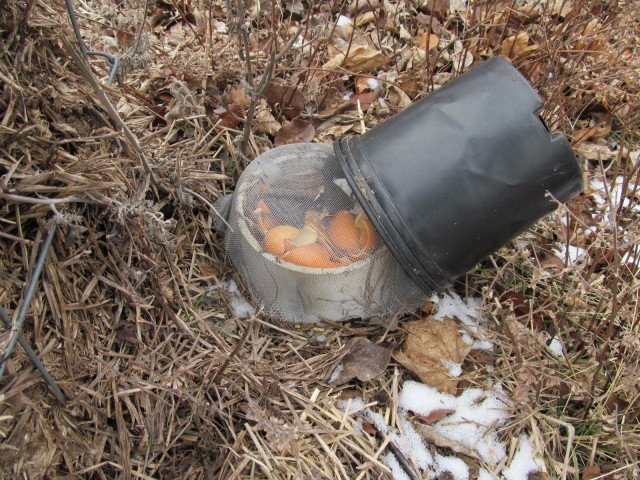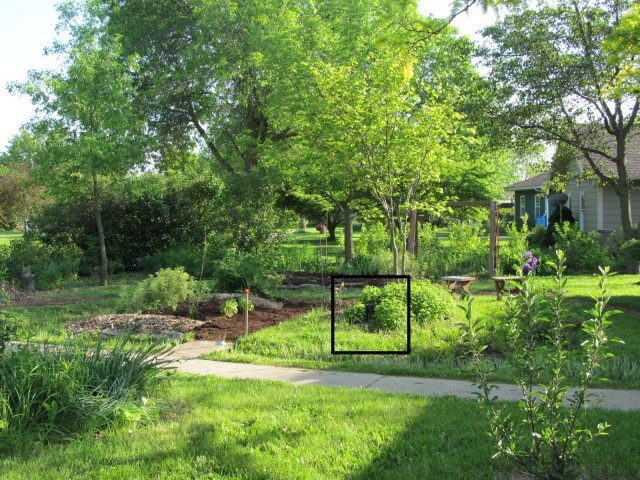How To Build a Worm Tower
- Milton Dixon
Updated – February 2024
Worm towers are DIY vermicomposting bins built into your garden and are just one of many techniques that permaculture designers can use to support the health and production of one’s favorite trees or shrubs. They are especially ideal to place within a plant guild as well.

How to Use
Above is an empty worm tower pictured as it was installed into the ground in the center of a plant guild at Midwest Permaculture in Stelle, IL. We then put in some wet straw for bedding, a handful of red wiggler composting worms, and a day’s worth of kitchen scraps. For the next couple of weeks, we added our daily kitchen scraps until it was full. Thereafter, the contents would slowly sink down as the worms enjoyed their feast, turning scraps into pure worm castings. About once a week there would be enough room to add another day’s worth of kitchen scraps. If someone had 7-towers they could top off one per day.
The beauty of the system? No mess, no fuss, no smell, no slimy buckets, no flies, and no compost juice to drain. Just insert kitchen scraps and walk away. The plants growing around the worm tower love the nutrients. The worms love their new home. We harvest the worm castings once a year in the spring. The only maintenance is to be sure the area stays moist in dry times (can’t let the worms dry out).

Enter your email address to receive access. By signing up, you'll receive occasional email newsletters with valuable permaculture insights and updates on our courses. We respect your privacy and won't send spam. You can unsubscribe at any time.
Winter?
We’ve used the worm tower for many years in our Northern Illinois climate and during the winter months, everything slows down including our worms. But our little friends have made it through each winter by burrowing down below the frost line which is why the tower should be adequately deep and kept full over the winter months. We also keep the area around and on top of the tower covered with leaves or straw overwinter to minimize freezing depth.

Harvesting the Castings
Harvesting the castings from our worm tower is simple. Come spring, all the worms migrate upwards to the top third of the tower in search of fresh kitchen scraps, so we set aside the wormy top third to replace after harvesting. Then we use a trowel around the inside edge to loosen up the castings and any small roots that have entered the holes from the surrounding perennial plants. Then remove these pure castings by hand and place them into a bucket for Becky. She now has these amazing castings to integrate into her potting mixes or compost.

What we like about the worm tower is how easy it is to make and use. This is a simple and clean way to dispose of kitchen scraps while feeding our gardens at the same time.
And by the way, is there any reason that drilling a bunch of holes in an old 5-gallon bucket and sinking that into the ground would not work as well? One would just want to be sure it is mulched heavily over winter to prevent the worms from freezing. And the lid is bigger (a bit more unsightly?) but one could cover that with a potting base and put a nice potted plant on top of that for looks! What other variations might there be on this theme? And what other materials might we use besides plastics?

What About the Potential Toxicity of PVC and Other Plastics?
